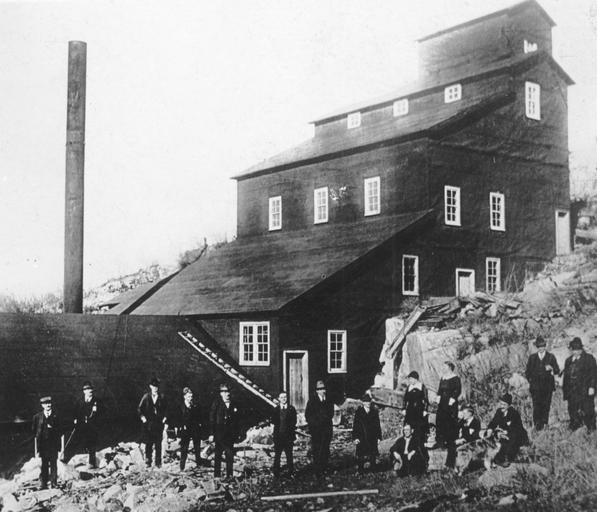MAKE A MEME
View Large Image

| View Original: | Ore_Chimney_Mine_-_Harlowe.jpg (1107x949) | |||
| Download: | Original | Medium | Small | Thumb |
| Courtesy of: | www.flickr.com | More Like This | ||
| Keywords: gold mine goldmine john bey johnbey johnny bey johnnybey harlowe northbrook ore chimney orechimney mine mining gold Contributed by Carl Kaestner. The Bey Mine, later called the Ore Chimney Mine, was located between Northbrook and Harlowe on the Harlowe Road (near the towlines crossing the Harlowe Road). It was the largest mining operation in the area with John Bey being accredited to the gold discovery. The Ore Chimney Mining Company, capitalized for $600,000, own lots in the first concession of the township of Barrie, Frontenac County. The officers of the company are as follows:—A. E. Fletcher, president, 220 Potoraac Ave., Buffalo; Frank Misener, vice-president, Welland, Ont.; Chas. Narroway, secretary-treasurer, 335 Brisbane Building, Buffalo; Jas. Sullivan, mine manager, Northbrook, Ont. The mine operated intermittently from 1909 to 1936 with the level of activity depending upon the price of gold. While the main shaft was excavated to a depth of 150 metres the mine also had shafts extending at four levels all approximately the same depth. Employing over 80 men at the peak of its production, the mine site contained a number of buildings including an office, bunk house, a mill with 20 stamping machines where were used to grind the ore (much of the above information is from 'The Mazinaw Experience' by John Campbell). Contributed by Carl Kaestner. The Bey Mine, later called the Ore Chimney Mine, was located between Northbrook and Harlowe on the Harlowe Road (near the towlines crossing the Harlowe Road). It was the largest mining operation in the area with John Bey being accredited to the gold discovery. The Ore Chimney Mining Company, capitalized for $600,000, own lots in the first concession of the township of Barrie, Frontenac County. The officers of the company are as follows:—A. E. Fletcher, president, 220 Potoraac Ave., Buffalo; Frank Misener, vice-president, Welland, Ont.; Chas. Narroway, secretary-treasurer, 335 Brisbane Building, Buffalo; Jas. Sullivan, mine manager, Northbrook, Ont. The mine operated intermittently from 1909 to 1936 with the level of activity depending upon the price of gold. While the main shaft was excavated to a depth of 150 metres the mine also had shafts extending at four levels all approximately the same depth. Employing over 80 men at the peak of its production, the mine site contained a number of buildings including an office, bunk house, a mill with 20 stamping machines where were used to grind the ore (much of the above information is from 'The Mazinaw Experience' by John Campbell). | ||||